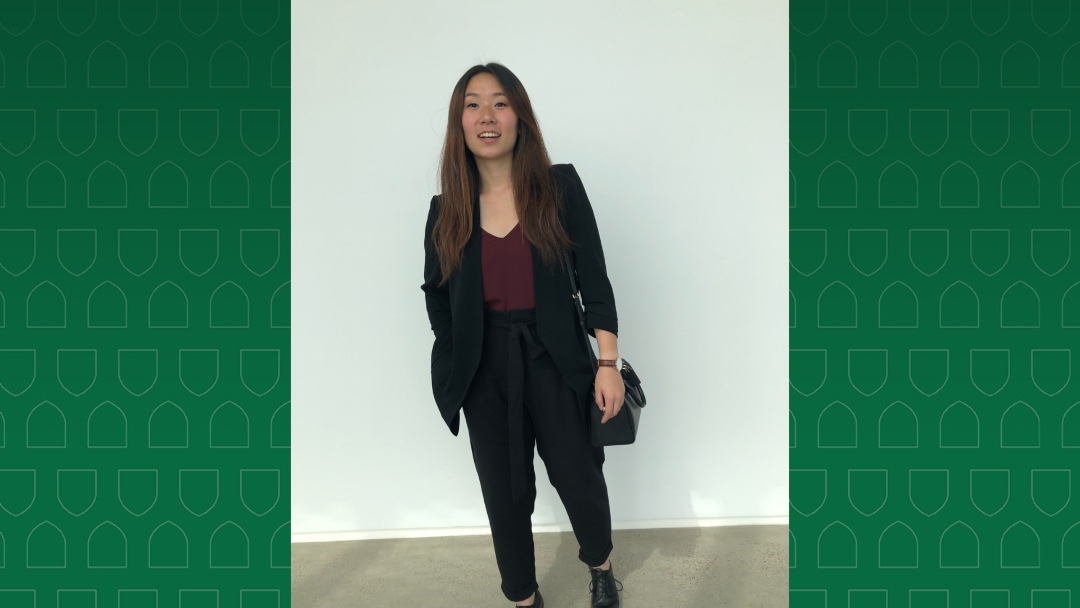
Young Innovators: USask researcher says pain assessment tools can be more inclusive
Have you ever been asked to rate your pain on a scale of one to 10? Or been shown a chart with different cartoon emoticons, where you are asked to choose one to describe your pain levels?
By Brooke KleiboerPain assessment tools such as these are used to help people describe their pain levels to health-care professionals to help them facilitate treatment and pain management, but a University of Saskatchewan (USask) researcher says these tools are not as universal as they seem.
As a graduate student in USask’s School of Rehabilitation Science, Tayah Zhang is conducting a research project that examines how pain assessment tools used to assess chronic musculoskeletal pain can provide culturally responsive descriptors that are more appropriate for different populations.
“Feelings and expressions of pain are subjective, meaning the way in which I experience pain and the way in which I express myself when I’m in pain differs from another person,” said Zhang. “That is because experiences and expressions of pain are influenced by an individual’s culture, by the way they were brought up, and by their own lived experiences.”
Zhang explained individuals from Indigenous cultures are likely to express pain in different ways than those from Western cultures. Zhang’s research team has partnered with the Northern Saskatchewan Cree community of Pelican Narrows to evaluate how musculoskeletal pain assessment tools are used, their validity, and how culturally responsive they are.
“So far, from our discussions with Cree Elder Rose Dorion and Knowledge Keeper Sally Sewap, we have learned that current pain assessment tools used may not be culturally responsive for their community,” said Zhang.
“The Elder explained that when the people of the community are in pain, they may be very quiet. This is different from most facial pain scale depictions where the last facial expression representing maximum pain is often drawn with an open mouth to indicate loud crying or screaming.”
Colours also play a role in how Indigenous communities may perceive pain. Zhang said one of the suggestions received for a new pain tool was to consider a blue-purple colour to represent high levels of pain, since the colour represents bruising and paleness, while orange should be used to represent no pain and red to represent intense emotions that accompany pain, such as anger.
“These findings really opened our eyes and allowed us to reconsider how we have been approaching pain assessments,” said Zhang. “It has also allowed us to begin thinking about ways to improve current pain scales, so they are more culturally responsive for Indigenous Peoples.”
Zhang is no stranger to cultural differences in expressing emotions, having moved to Canada from China when she was nine years old.
“Through my own lived experiences of growing up within two different cultures, I had a realization of the impact culture has had on the way I expressed pain,” she said. “Growing up in a Chinese culture, I learned that stoicism was a positive trait to possess. It wasn’t until I moved to Canada that I learned it was OK to cry when I’m in pain and that crying does not demonstrate a sign of weakness.”
She applies this experience to her master’s research work with supervisor Dr. Stacey Lovo (PhD), an assistant professor in USask’s School of Rehabilitation Science. The research team plans to take the insights gathered from their partnership with Pelican Narrows, via a remote back pain clinic, to new relationships in La Loche and Waterhen Lake First Nation to work with community members on community-directed needs assessments and pain scales.
“This is one step in the direction towards more culturally responsive pain management strategies and health equity,” said Zhang.
The research is supported by the USask Health Sciences Graduate Program, the Canadian Institutes of Health Research, and the Saskatchewan Health Research Foundation.
This article first ran as part of the 2022 Young Innovators series, an initiative of the USask Research Profile and Impact office in partnership with the Saskatoon StarPhoenix.
Article re-posted on .
View original article.
